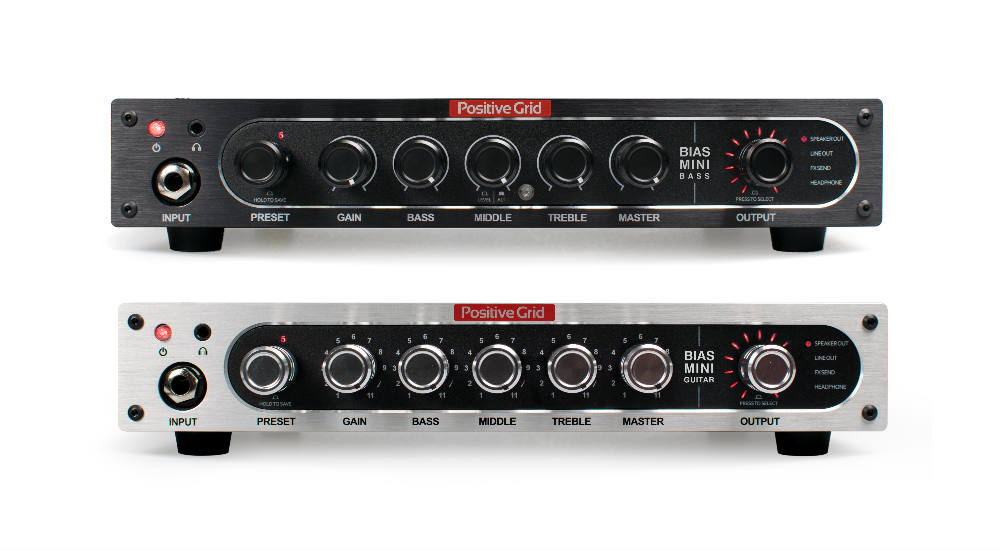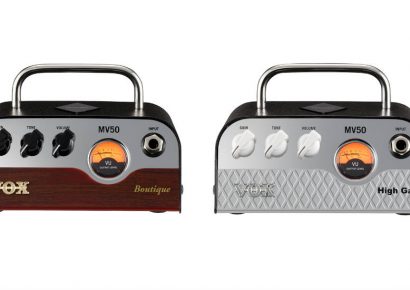The digital age has brought about a number of products that play gleefully into the hands of this concept. Modeling amps and floorboard units abound, each promising unmitigated combinations and permutations allowing you to dial in the entirety of sonic history at the click of a drop down box. Positive Grid was one of the first companies to bring this hive-mind mentality to the fingertips of smartphone and tablet users the world over in their BIAS Amp line of apps, which have now expanded to include Mac and PC users in their stable. They subsequently entered the world of hardware a few years ago with the BIAS Head. I had the pleasure of reviewing one as one of my first forays into the modeling world and was struck dumb by the limitless possibilities the physical product afforded me even before plunging into the software. As such, I had a reasonable idea of what I was in for when faced with these two new miniaturised versions I see before me.
Before I get to the amps themselves, I have to make mention of the electronic brain of the enterprise, the software. This is, after all, where the vast majority of the tone shaping comes to life. Positive Grid’s software allows you to choose from hundreds of different amp models just as they appear in the real world, anything from the giants of the industry like ‘70s Plexis, British Class A Tube circuits, searing solid-state shredders and a plethora of others. Starting with those blueprints, you can swiftly and easily change out power transformers, pre and power tubes and their age and era of manufacture, capacitors that warm over time, tonal filtering and just about every possible thing there is to tweak about an amp. The cabinet well is just as deep. Speaker cone types and combinations, cabinet thicknesses, mic placement and even the parameters of the simulated room said cab is in is all up for grabs and ready to take with you wherever you’re playing. Whether you’re a guitar or bass player there are literally millions of different combinations on the menu even before you download the impulse responses designed by world-renowned artists and tone chasers. My head is spinning just thinking about it.
While it all sounds a lot, when you pour all of that infinite possibility into something as compact and lightweight as either of these heads, the whole thing becomes strangely easy and familiar. Both the bass and guitar MINI heads come loaded with sixteen factory presets that start the smoke clearing as soon as you plug in. From glassy Princeton clean tones to bluesy break up to abject sonic destruction, there is enough in tow from the get-go to simply set up and start playing. At this point, possibility turns to functionality and renders either or both units a perfect choice for those of us looking to downsize a touring rig, especially when you realise just how much of the 300 watts of output power you’re ever going to need. Once you have designed your own Tonehenge in the app and assigned it a destination on board, you can zero in on the specifics of the room with the staggeringly simple three-band EQ, input gain and Master volume. This is where I genuinely preferred the MINI heads to their predecessor as this achingly simple final touchstone streamlines proceedings for those instances when there is just too much else going on.
In sound check, this amount of distillation would prove a handy way to hone in without getting lost in the milieu and without proving to be little more than limitation. In many cases, this is where a lot of modeling units fall down. Any and all of them are, or at least should be, designed with the heady, anxiety inducing arena of live performance at the fore. The last thing anybody wants to do is spend a whole sound check reading a user manual or scouring the FAQs for answers when the drummer is pilfering the rider. Positive Grid has done well to balance unmitigated possibility with on-the-fly functionality. This, combined with the surprisingly lightweight yet next to bulletproof all-metal housing, makes the MINI heads a particularly road-ready variation on the theme.
We all want to leave as distinct and individual a mark on the world as we can. For many of us, looking to music as a chief means of personal expression is a direct reaction to this innate desire. While the digital age has opened up can after can of worms and the burden of choice weighs heavy on those who dare to wander down that rabbit hole, it is incredibly encouraging to know that companies like Positive Grid keep a watchful eye on real world application in designing their units. Both the guitar and bass versions of the BIAS MINI heads are two of the most user-friendly modelers I’ve come across, guiding you through the process of fully tailoring your sound to suit your every waking need.

